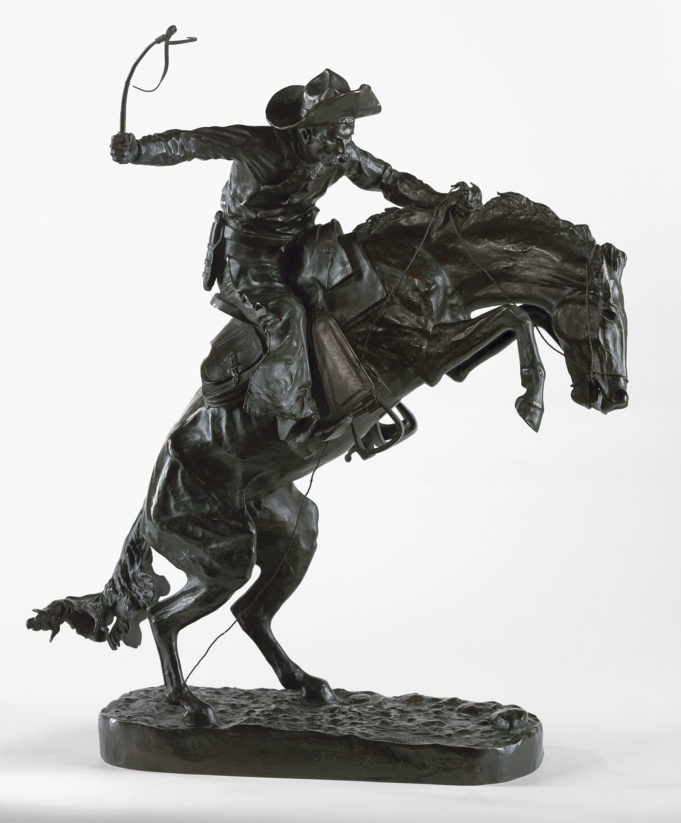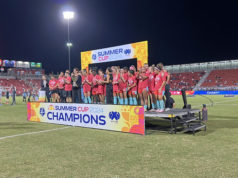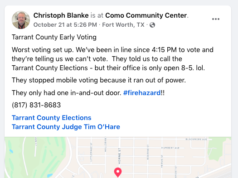Two Fort Worth neighbors have their roots in the same place: The Old West.
I’m talking about the Amon Carter Museum and the rodeo that resides across the street from it. The museum began with its namesake’s collection of works depicting the American frontier by Frederic Remington and Charles M. Russell. These artists attempted to show the robust lifestyle of those who made their homes in that legendary expanse.
Though the Carter has expanded its collection of American art well beyond the cowboy genre, western heritage still forms an important part of its identity. The facility dedicates an entire section to the works of Remington and Russell.
As I wrote in the Stuff section of the Weekly this week, the museum also owns a number of works with a sports theme. One intriguing example comes via a letter Russell wrote to a man he calls “Friend Guy.” The artist would often illustrate his correspondence and visitors can view several of the originals preserved in drawers. On January 28, 1916, he wrote to Guy Weadick about “bronk riders” and “bull dogers (aka steer wrestlers)” He notes that Weadick’s audience members “have all seen wild west shows but yours is no show it’s a contest where horses and riders are strangers.” The event Weadick founded would eventually become one of the world’s premier rodeos: The Calgary Stampede. Russell had knowledge of its first incarnations in Calgary and Winnipeg.
![Charles M. Russell (1864-1926); Friend Guy [Guy Weadick], January 28, 1916; 1916; Ink, watercolor, and graphite on paper; Amon Carter Museum, Fort Worth, Texas; 1961.308.1](https://www.fwweekly.com/wp-content/uploads/2017/06/RussellLetter-1961-308-1_pr-191x300.jpg)
Competitions in which cowboys tested their riding and roping skills had sprung up in the latter part of the 19th century, around the time when Russell and Remington were creating the images of the West for which they became known. Some of the creations portrayed cowboys working at the tasks that eventually would be incorporated into the sport of rodeo.
The most prominent such work is a sculpture by Remington called The Broncho Buster. The Carter owns three versions of it, with the largest placed prominently in a first-floor gallery. It shows a cowboy in the act of conditioning a recalcitrant mount to accept the idea of having a rider on its back.
That endeavor translates pretty straightforwardly into the bronc riding competitions one might see in the Will Rogers Memorial Center arena. Other events, like bull riding, were created especially for the rodeo arena. Each year, the Stock Show supplements its regular PRCA shows with a Best of the West Ranch Rodeo featuring events designed to reflect the daily duties of a working ranchhand. The Stock Show, and indeed Cowtown in general, is never shy about celebrating western heritage.
When we visit the rodeo or the art museum, we do so in part to observe and enjoy talent – the artist’s beautiful brushstrokes or the surpassing athletic abilities of human and animal competitors. We also expand our knowledge of the culture that permeates each. In Fort Worth, we are fortunate to have more than one way to appreciate, and learn about, the vigor, toughness, and character of those who call themselves cowboys and cowgirls. And the two venues are right across the street from each other.












